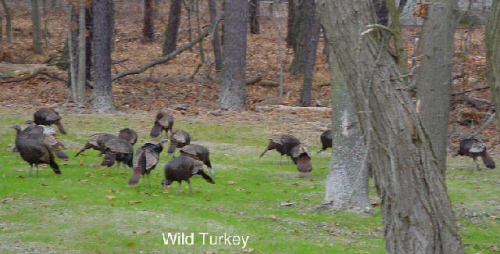Wild Turkey
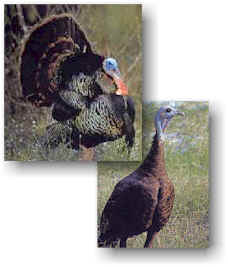
This species was introduced in areas adjacent to the Laboratory in 1996. Since then, significant migration of wild turkeys on to the BNL site has occurred. Monitoring this population on-site helps assess the success of this introduction. The wild turkey live in oak woodlands and pine-oak forests at BNL.
Description
The male is 48"(122cm); and the female 36"(91cm). They have brown feathers with iridescent bronze sheen and feathers barred with black; head and neck naked, with bluish and reddish wattles; trail fan-shaped, with chestnut or buff tail tips. The male has spurs and a long "beard" on its breast. The female is smaller, lacks spurs, and usually lacks a "beard". Females lay 8-15 buff-colored eggs, spotted with brown, in a shallow depression lined with grass and leaves.
For more information about the turkey go to Wild Turkey in New York
References
1. 1994; National Audubon Society Field Guide to North American Birds (Eastern Region)
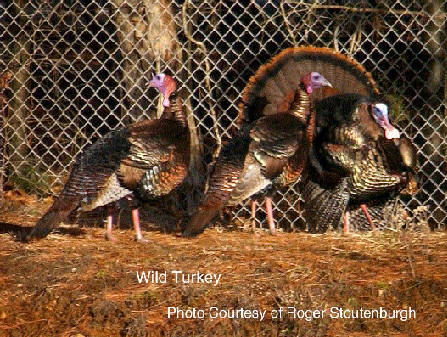
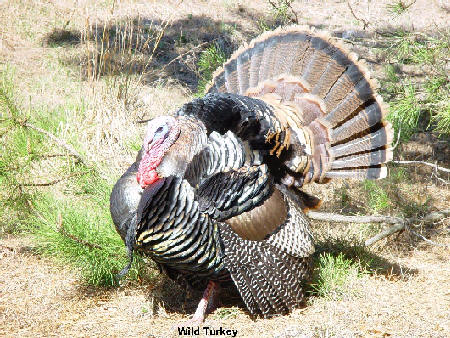
The wild turkey begins displaying as seen in the above photos in the early spring. Mating occurs in April and May.
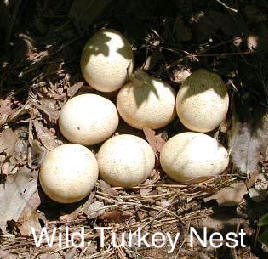
Turkeys are ground nesters and place nests in areas with good vegetative cover, at the base of trees, or where camouflage is good. The hens lay between one and two dozen eggs, which hatch between mid-June to early-July.
The hens stay with the polts through the fall when they begin to group up into flocks for the winter months. At BNL the largest winter flock seen has been over 100 birds. In most cases flocks are between 10 and 30 birds but larger flocks can be occur.
